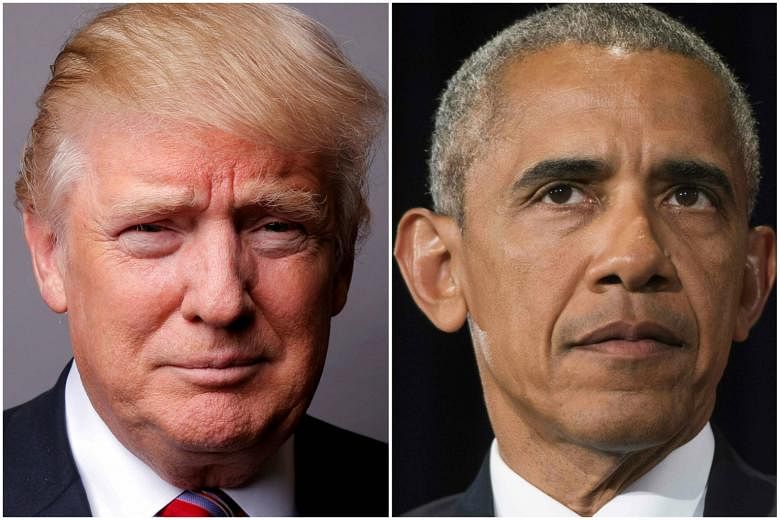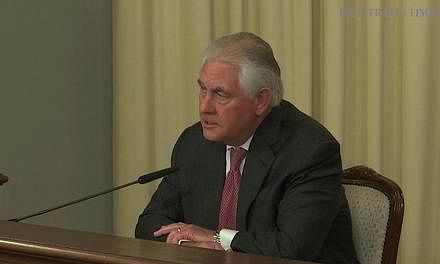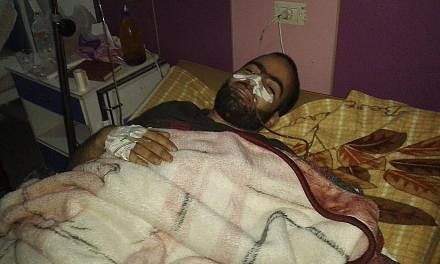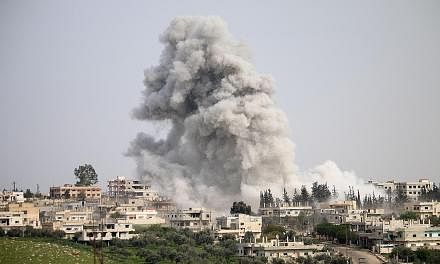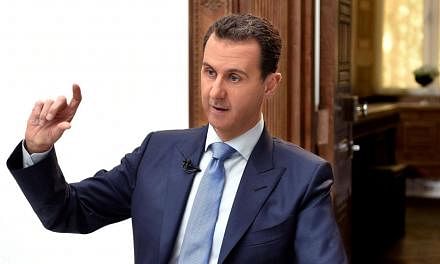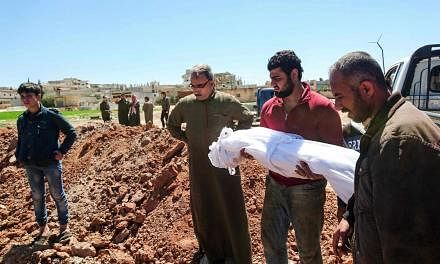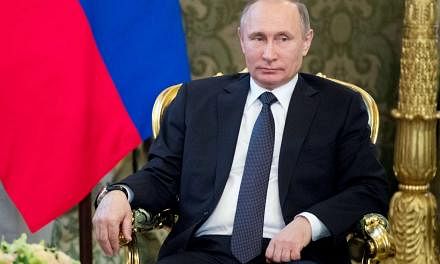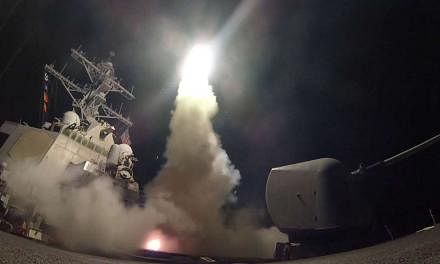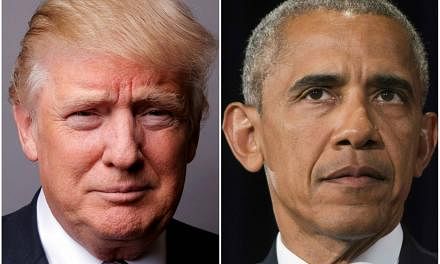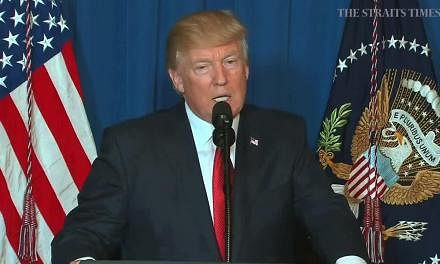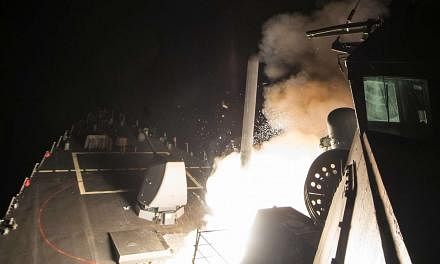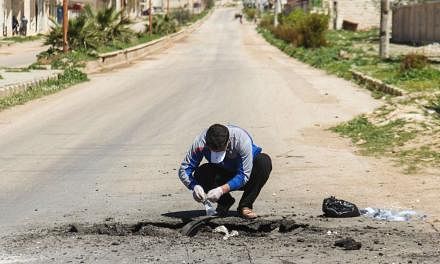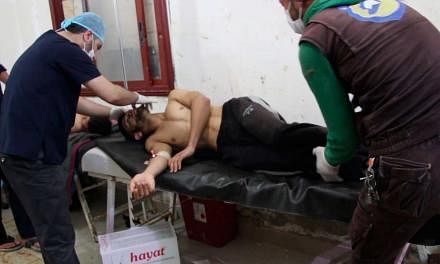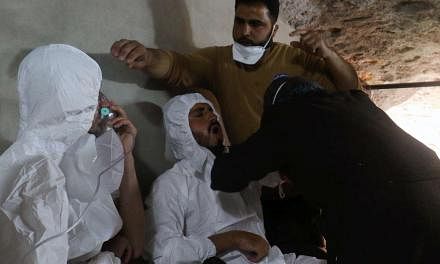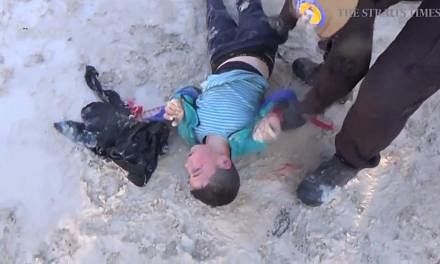WASHINGTON - US President Donald Trump ordered missile strikes on Thursday (April 6) against a Syrian airfield from which a deadly chemical attack was launched, declaring he acted in America's national security interests against Syrian President Bashar al-Assad.
The US military fired dozens of Tomahawk cruise missiles against the Shayrat Airfield controlled by Assad's forces, in response to the attack on Tuesday in the rebel-held town of Khan Sheikhoun which killed more than 80 people, including many children.
It was the toughest direct US action so far in Syria's six-year-old civil war.
Here's a timeline of key chemical attacks in Syria since the conflict began in March 2011 and the US responses:
April 29, 2011:
The US imposes sanctions on Syria's intelligence agency in response to the regime's crackdown on protesters during the Arab Spring revolution.
Aug 18, 2011:
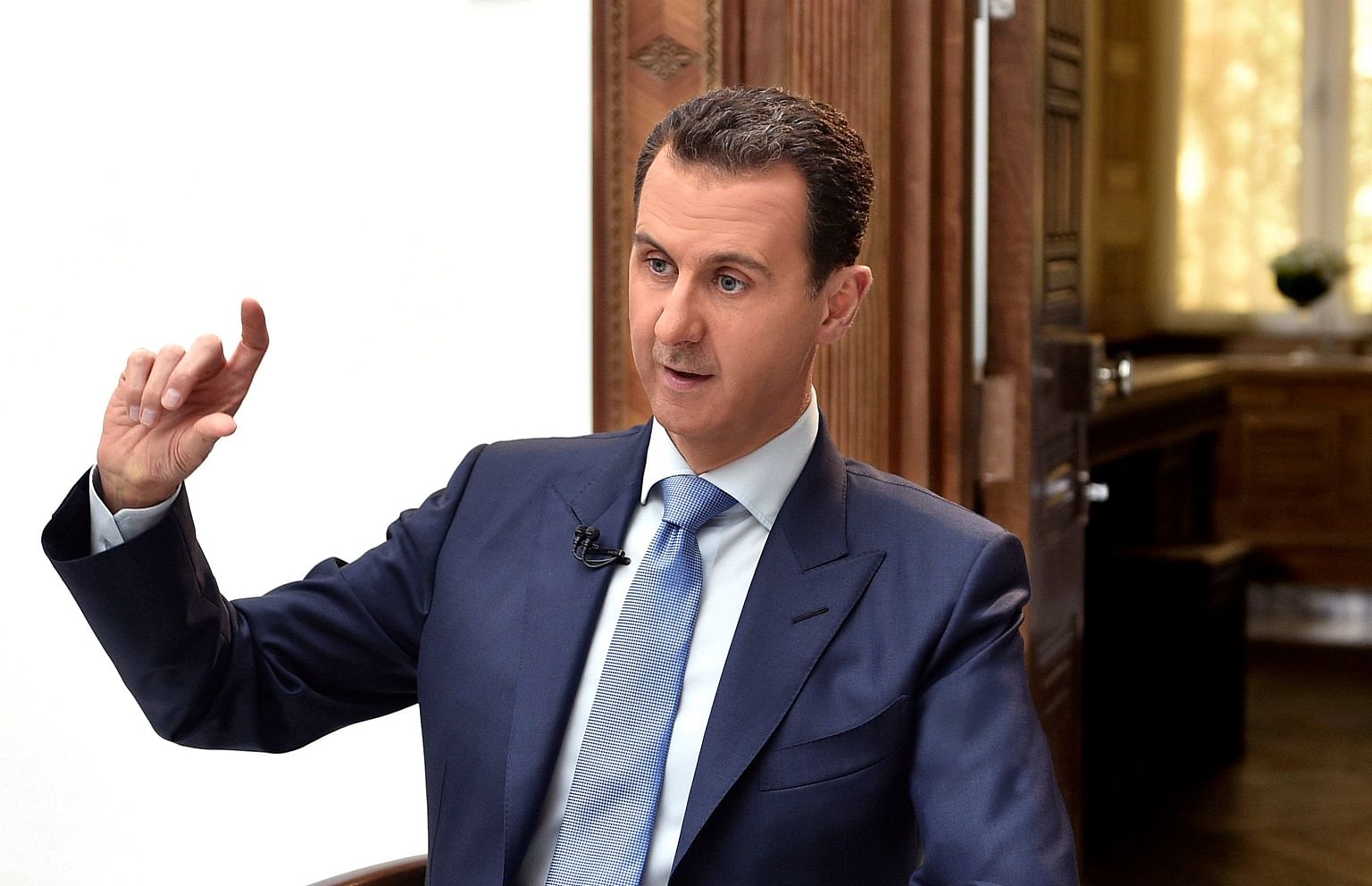
President Obama, along with the leaders of Britain, France and Germany, calls for Mr Assad to step down.
July 23, 2012:
The Syrian government acknowledges for the first time that it has chemical weapons and threatens to use them in the event of military operations by Western countries, but not against its own population.
Aug 20, 2012:

Mr Obama warns Mr Assad that the use of chemical or biological weapons would cross a "red line" for the US.
Dec 3, 2012:
Mr Obama reiterates the use of chemical weapons is totally unacceptable, and warn Mr Assad he will face consequences .
March 19, 2013:
More than two dozen people, including several Syrian soldiers, die in a sarin gas attack in Khan al-Assal town in northern Syria. The government and rebels blame each other for the incident.
June 13, 2013:
The White House announces US intelligence believes Mr Assad used chemical weapons and vows to increase military aid to the rebels.
Aug 21, 2013:
Hundreds of people are killed in the east and south-west of Damascus, including in Moadamiyet al-Sham, in chemical weapon strikes after Syrian troops launch an offensive in the area. The opposition blames the regime, which denies the charge.
Aug 31, 2013:
Mr Obama says he has authorised the use of force against Syria but will seek authorisation from Congress before carrying out strikes.
Sept 14, 2013:
The US and Russia reach a deal to eliminate Syria's chemical weapons by the middle of 2014, averting punitive US strikes against the Assad regime.
Sept 27, 2013:
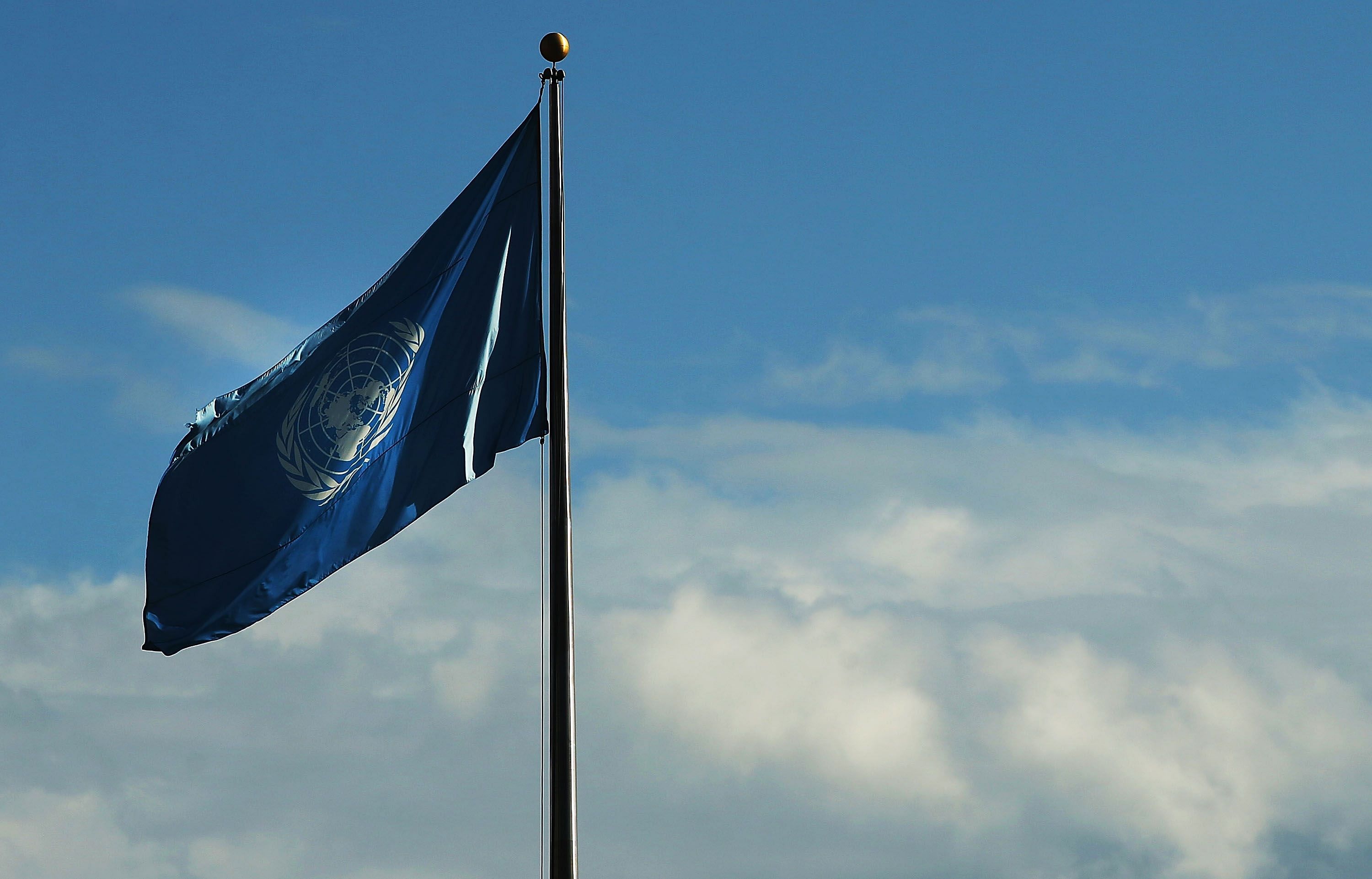
The UN calls on Syria to destroy its chemical weapons stockpile.
Oct 14, 2013:
Syria signs the Chemical Weapons Convention (CWC), strictly prohibiting chemical weapons.
June 23, 2014:
The Organisation for the Prohibition of Chemical Weapons (OPCW) says it has removed the last of Syria's chemical weapons.
Sept 10, 2014:
The OPCW says chlorine was used as a weapon "systematically and repeatedly" in villages in north-western Syria's Idlib province earlier in the year. Human Rights Watch says Syrian government forces were behind the attacks.
April, 2015:
Syrian groups in Idlib province say barrel bombs containing chlorine were dropped.
Aug 25, 2015:
Syrian rebels and activists say they documented a chemical weapons attack on Aug 21 in the rebel stronghold of Marea in northern Aleppo, affecting dozens of people.
Aug and Sept, 2016:
Hospital officials and activists in Aleppo say chlorine gas is used in attacks. UN's special envoy to Syria says such an attack would be "a war crime". The UN Security Council agrees to form a panel of experts to investigate chlorine attacks. Washington, London and Paris blame the Syrian regime, but Moscow says there is no irrefutable evidence proving the claim.
Feb 28, 2017:

Russia and China veto a UN Security Council resolution authorising sanctions against Syria for chemical weapons use.
March 3, 2017:
The OPCW says it is examining allegations of eight toxic gas attacks in Syria since the beginning of the year.
April 4, 2017:

An attack on a rebel-held town in northern Syria kills at least 86 people, 27 of them children. Autopsies on three Syrians who died after being brought to Turkey for treatment suggest sarin was used in the attack.
April 6, 2017:

President Trump orders a massive military strike on a Syrian air base in retaliation for the chemical attack. The US navy fires 59 Tomahawk cruise missiles at the Shayrat Airfield from the USS Porter and the USS Ross, which belong to the US Navy's Sixth Fleet and are located in the eastern Mediterranean sea.
The strike targets radars, aircraft, air defence systems and other logistical components at the military base south of Homs in central Syria, from where Washington believes the deadly chemical strike was launched.
SOURCES: USA TODAY, AFP, REUTERS
